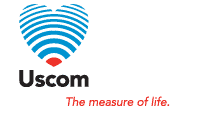Uscom Evidence
Uscom maintains a reference of all current evidence supporting Uscom's products.
For a full list of all evidence see All Evidence
Ilaria Pisani
Presented: ICMH 2018
Published: To be published in ISUOG Journal after the meeting
Objectives: Hyperglycemia caused by gestational diabetes has been associated by many studies to the development of alterations in the cardiovascular system. The aim of our study was to assess haemodynamic parameters in a population of pregnant women during the III trimester of pregnancy after the diagnosis of gestational diabetes (GDM) and to evaluate foetal and maternal outcome at delivery.
Methods: 31 women underwent a non-invasive haemodynamic measurement throughout the USCOM method at the moment of diagnosis. This population was compared to haemodynamic assessment in a population of women with physiological pregnancy matched for gestational age. We repeated the haemodynamic assessment after 2 and 4 weeks. Our population was divided and compared according to the therapy: diet or diet plus insulin.
Results: We found higher Total Vascular Resistance (TVR) in group with GDM compared to physiological pregnancy (Tab.1). We divided our population according to the treatment. Patients that obtained a good glycemic control with diet presented significative lower TVR, that returned to the values of physiological pregnancy population (Fig.1). Patients that needed insulin therapy showed higher TVR. The hemodynamic profile of women with GDM who had a normal labour was compared to patients who had complications. There were significant differences between the values of Stroke Volume (88±16 vs 73±12, p0.007), Inotropy Index (1.80±0.40 vs 1.50±0.40, p0.05), and PKr (22.80±8.50 vs 34.70±13.20, p0.002). We divided our population in two groups according to TVR: we found a higher incidence of labour complication (pPROM, preterm labour, macrosomia, caesarean section for foetal distress and PPH) in patients with TVR >1200 dyne.
Conclusions: Pregnant women with GDM seem to have pathological adaptations of the cardiovascular system as evidenced by increased TVR and by the decrease in Cardiac Output, INO and SV. Additionally, patients with an altered haemodynamic profile were associated with higher incidence of labour complication.




